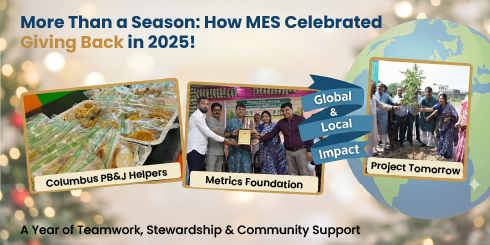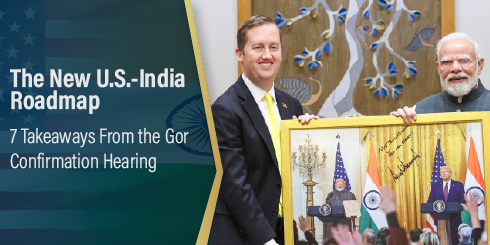Shifting Your Supply Chain Strategy to Align with the New Normal
Insights for small businesses from the AACG Economic Summit 2022
If the pandemic taught us anything it’s that there is no “normal”—new or otherwise. Instead, what we have is what, perhaps, we should have had all along: smart, nimble supply strategies that work within a world where everything is subject to change, and anything can happen.
That’s exactly what our VP of Operation, Global Sourcing, Transportation, and Engineering, Randy Rhodes told a full house of small business owners at yesterday’s AACG Summit in Columbus, Ohio.
At MES, we’ve seen first-hand the toll that unexpected disruptions and continual transformations have had on small businesses. We, on the other hand, have continued to do what we do best, which has been strategic and, admittedly, a little lucky in creating an environment marked by timely delivery that is mindful of cost and respectful of change.
What follows are two of the primary supply chain strategies we here at MES developed to help industrial, lighting, automotive, EV, and other manufacturers both small and large get the parts and components they need to meet customer demand.
Strategy #1: Turn Negatives into Positives
At MES, turning negatives into positives is as much a part of our company DNA as it is one of primary supply chain management strategies. This ability comes naturally to our founder and president, Hiten Shah. As such, we’ve been fortunate enough to have it embedded into our company culture.
In general, here’s how it works. First, we assess the negative, then we look for all the possible ways to overcome that negative.
This seemingly small act does something big; it challenges us to think from multiple perspectives. Along the way, it also opens up greater possibilities, allowing us to see and become energized by the fact that there is more than one way to skin the proverbial cat.
Finally, we categorize our list of possibilities into fast, microwave-style wins and low-and-slow wins. By having an inherent ability to toggle among various options, we’re able to flex and adapt regardless of external circumstances. That, of course, is something that proved incredibly beneficial during the global pandemic of 2020.
One of the best examples we have for turning negative into a positive is from 2017/2018 when tariffs skyrocketed.
“It was horrible,” says Randy, “Everyone was scrambling, but what MES did was get with our customers and look at the costs. Then we got busy building a second set of production tools in India and Vietnam, even though we didn’t know at the time that COVID-19 would shut down China and later the rest of the world in 2020.”
This dual-sourcing strategy was immensely important in keeping our customers in parts regardless of who or what was shutdown. By sourcing suppliers in two different countries, we were able to keep parts shortages to a minimum regardless of whether China was in a shutdown and India was open or vice versa.
You can see how we turned the negative of steep tariffs into a positive through a dual-sourcing strategy that continues to serve MES and our customers even today.
Strategy #2: Plan for Contingencies
Football coach Bobby Bowden once said, “It’s better to be lucky than good.” At MES, we prefer to combine luck with good planning.
Because luck is out of our control, we focus instead on the good planning part. We’ve found that by keeping up with the news, monitoring trends, and watching for the signs of change, we can create our own data-informed forecasts and devise our own ready-countermeasures.
Take, for example, how MES has responded to the ongoing issue of shutdowns and shipping delays. There’s nothing we—or anyone—can do about shutdowns. So, we left that part to luck and put our efforts into developing a Plan B, Plan C, Plan D and all the way to Plan Z.
We acknowledge that this is far easier for us than for, say, a small business. But that’s because we’ve built a robust global network and developed strong, mutually beneficial business relationships at every point in the supply chain.
By keeping an eye on which ports have struggled and which ones went through tough labor negotiations, we were able to shift our incoming containers from the port in Los Angeles to the port of New York long before it was a problem.
We also leveraged our long-standing relationships with our many freight forwarders and co-strategized with them. MES ships between 500 and 700 containers a year to North America, which gives us the ability to maintain our position with freight forwarders when everything around us is going haywire. The result? MES and our customers experience minimal, if any, shipping delays.
Dos & Don’ts for Avoiding Shipping Delays
- DO watch for clues in the news and trades.
- DON’T put all your eggs in one basket. Instead, have multiple freight forwarders in your arsenal so you can pivot as needed.
- DO strengthen your relationships with your freight forwarder by engaging their opinion and strategizing with them.
- DON’T be afraid to be vulnerable and share your concerns with your freight forwarders.
- DO ask your freight forwarder when they think a good time to move is and then pay attention to what they have to say.
- DON’T be afraid to make a move even if it feels scary.
The key to successful supply chain management is giving yourself options. For some, that can mean amping up relationships with freight forwarders. For others, it can mean upping the game when it comes to staying in the know. And for still others, it can mean partnering with someone like MES to take the hassle and burden out of manufacturing, shipping, and warehousing.
As a global manufacturing supply chain logistics company, we have offices in the U.S., China, India, Vietnam, Poland, Mexico and relationships with some of the best suppliers and freight forwarders in the world.
Our biggest advantage is delivering Just-in-Time to our customers. So, if you’re looking to strengthen your supply chain and minimize shipping delays, contact us today.




